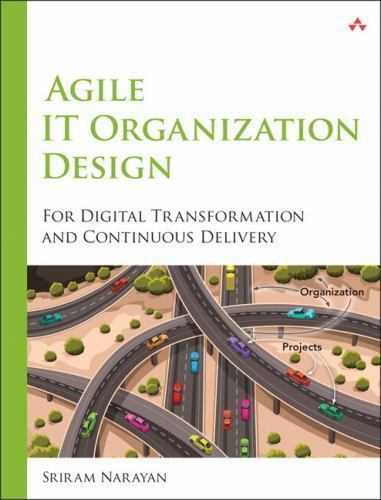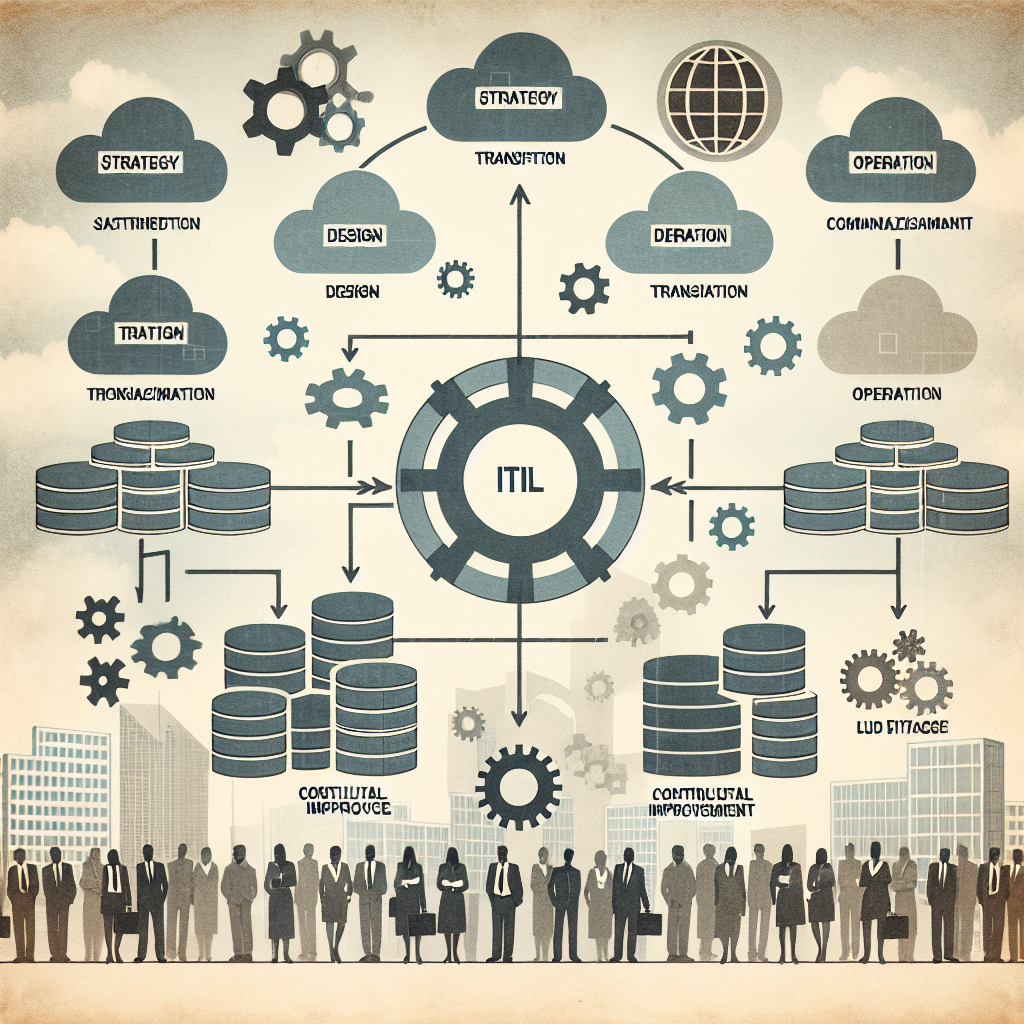Your cart is currently empty!
Tag: Organization

Data Organization for Researchers: Tools and Techniques for Success
As a researcher, one of the most important aspects of your work is effectively organizing and managing your data. Proper data organization is crucial for ensuring that you can easily access and analyze your data, as well as share it with colleagues and collaborators. In this article, we will discuss some key tools and techniques that can help you successfully organize your research data.One of the first steps in effectively organizing your data is to establish a clear and consistent file naming system. This system should be logical and easy to understand, making it easy for you to quickly locate and access the data you need. It is also important to include relevant information in your file names, such as the date, project name, and any other pertinent details.
In addition to a consistent file naming system, using folders and subfolders can also help you keep your data organized. By creating a hierarchical structure for your data, you can easily categorize and group related files together. This can make it much easier to find specific files or data sets when you need them.
Another important tool for organizing research data is a data management software. There are many different options available, ranging from simple spreadsheet programs to more advanced database tools. These software tools can help you track and organize your data, as well as provide features for data visualization and analysis.
Collaboration tools are also essential for researchers working in a team setting. These tools allow multiple researchers to access and work on the same data set simultaneously, making it easier to collaborate and share findings. Some popular collaboration tools for researchers include Google Drive, Dropbox, and Microsoft Teams.
In addition to using tools and software, there are also several techniques that can help you effectively organize your data. One such technique is data cleaning, which involves removing any irrelevant or duplicate data from your datasets. By cleaning your data before analysis, you can ensure that your results are accurate and reliable.
Another technique for data organization is data documentation. This involves keeping detailed records of your data sources, methods, and analysis procedures. By documenting your data in this way, you can ensure that your research is transparent and reproducible.
Overall, effective data organization is crucial for researchers to successfully manage and analyze their data. By using tools and techniques such as consistent file naming systems, folder structures, data management software, collaboration tools, data cleaning, and data documentation, researchers can ensure that their data is well-organized and easily accessible. This, in turn, can help researchers to make meaningful discoveries and advance their research in a more efficient and effective manner.

Agile IT Organization Design: For Digital Transformation and Continu – VERY GOOD

Agile IT Organization Design: For Digital Transformation and Continu – VERY GOOD
Price : 5.19
Ends on : N/A
View on eBay
Agile IT Organization Design: For Digital Transformation and ContinuityIn today’s fast-paced digital landscape, businesses are constantly evolving and adapting to meet the ever-changing demands of the market. This is where Agile IT organization design comes into play, providing companies with the flexibility and agility they need to drive successful digital transformation initiatives.
An Agile IT organization is structured around cross-functional teams that are empowered to make decisions autonomously and respond quickly to changes in the market. This approach allows for faster delivery of products and services, improved collaboration between teams, and increased innovation.
But Agile IT organization design isn’t just about adopting a new framework or methodology – it’s about creating a culture of continuous improvement and learning. By fostering a culture of experimentation and iteration, companies can stay ahead of the curve and adapt to new challenges as they arise.
Digital transformation is no longer a one-time event – it’s an ongoing process that requires a flexible and responsive IT organization. By embracing Agile principles and practices, businesses can ensure they are well-equipped to navigate the ever-changing digital landscape and drive long-term success.
So, if you’re looking to future-proof your business and drive digital transformation initiatives, consider adopting an Agile IT organization design. It may just be the key to unlocking your company’s full potential in the digital age.
#Agile #Organization #Design #Digital #Transformation #Continu #GOOD
How to Successfully Implement ITIL Application Management in Your Organization
ITIL (Information Technology Infrastructure Library) Application Management is a crucial component of IT service management that focuses on managing and maintaining the applications used within an organization. By implementing ITIL Application Management practices, organizations can ensure that their applications are effectively managed, maintained, and optimized to support business operations and deliver value to customers. In this article, we will discuss how organizations can successfully implement ITIL Application Management to improve their application performance and overall IT service delivery.1. Understand the ITIL Application Management Framework: Before implementing ITIL Application Management practices, it is important for organizations to have a clear understanding of the ITIL framework and its principles. ITIL Application Management focuses on managing the lifecycle of applications, from development to retirement, and includes processes such as application design, deployment, operation, and optimization. By familiarizing themselves with the ITIL framework, organizations can align their application management practices with industry best practices and standards.
2. Define Roles and Responsibilities: Successful implementation of ITIL Application Management requires defining clear roles and responsibilities within the organization. This includes identifying individuals or teams responsible for application design, development, deployment, operation, and optimization. By assigning specific roles and responsibilities, organizations can ensure that tasks are clearly defined and accountability is established for each stage of the application lifecycle.
3. Establish Processes and Procedures: To effectively manage applications, organizations need to establish processes and procedures that govern how applications are designed, deployed, operated, and optimized. This includes defining workflows, documentation requirements, change management procedures, and performance monitoring processes. By establishing clear processes and procedures, organizations can ensure consistency and efficiency in their application management practices.
4. Implement Application Monitoring and Performance Management: Monitoring and managing the performance of applications is critical to ensuring that they meet business requirements and deliver value to customers. Organizations should implement monitoring tools and performance management processes to track key metrics such as application availability, response time, and resource utilization. By monitoring application performance, organizations can identify and address issues proactively, before they impact business operations.
5. Continuously Improve Application Management Practices: ITIL Application Management is an ongoing process that requires continuous improvement and optimization. Organizations should regularly review and evaluate their application management practices to identify areas for improvement and implement changes as needed. This includes conducting regular performance reviews, soliciting feedback from stakeholders, and staying abreast of industry trends and best practices.
In conclusion, successful implementation of ITIL Application Management requires a comprehensive understanding of the ITIL framework, clear roles and responsibilities, established processes and procedures, effective monitoring and performance management, and a commitment to continuous improvement. By following these best practices, organizations can optimize their application management practices and improve their overall IT service delivery.

Key Steps to Finding the Best IT Outsourcing Partner for Your Organization
In today’s fast-paced digital world, outsourcing IT services has become a popular option for many organizations looking to streamline their operations and cut costs. However, finding the right IT outsourcing partner can be a daunting task, as there are countless providers to choose from. To help you navigate this process, here are some key steps to finding the best IT outsourcing partner for your organization.1. Understand your needs: Before you start searching for an IT outsourcing partner, it’s important to have a clear understanding of your organization’s IT needs. What specific services do you require? Are you looking for a provider that can offer comprehensive IT support or are you just looking for assistance with specific projects? By having a clear understanding of your needs, you can better evaluate potential partners and ensure they can meet your requirements.
2. Research potential partners: Once you have a clear understanding of your IT needs, it’s time to start researching potential outsourcing partners. Look for providers that have experience working with organizations similar to yours and have a proven track record of delivering high-quality IT services. You can also ask for recommendations from other organizations in your industry or check online reviews to get a sense of the provider’s reputation.
3. Evaluate their expertise and capabilities: When evaluating potential IT outsourcing partners, be sure to assess their expertise and capabilities. Do they have the technical skills and knowledge required to meet your organization’s IT needs? Are they up-to-date on the latest technologies and trends in the industry? It’s important to choose a partner that can provide the level of expertise and support that your organization requires.
4. Consider their communication and responsiveness: Effective communication is key to a successful outsourcing partnership. When evaluating potential partners, pay attention to how they communicate with you and how responsive they are to your inquiries. A reliable IT outsourcing partner should be able to provide timely updates on projects, address any concerns or issues promptly, and be accessible whenever you need assistance.
5. Review their pricing and contract terms: Cost is always a factor when choosing an IT outsourcing partner, so be sure to review their pricing structure and contract terms carefully. Look for a provider that offers competitive pricing and transparent pricing models, so you know exactly what you’re paying for. It’s also important to review the contract terms to ensure they align with your organization’s needs and expectations.
By following these key steps, you can find the best IT outsourcing partner for your organization and establish a successful and productive partnership. Remember to take the time to research potential partners, evaluate their expertise and capabilities, and ensure they have strong communication and responsiveness. With the right partner by your side, you can streamline your IT operations, cut costs, and focus on growing your organization’s success.

Securing Your Organization: A Guide to Developing Robust Cybersecurity Programs and Policies
In today’s digital age, cybersecurity has become a top priority for organizations of all sizes. With the increasing number of cyber threats and attacks, it is essential for businesses to develop robust cybersecurity programs and policies to protect their sensitive data and information.Developing a strong cybersecurity program starts with understanding the potential risks and vulnerabilities that your organization faces. Conducting a thorough risk assessment will help identify areas of weakness and prioritize cybersecurity measures. This assessment should include evaluating the security of your network, systems, and applications, as well as the potential threats from external sources.
Once you have identified the risks, it is important to develop a comprehensive cybersecurity policy that outlines the procedures and guidelines for protecting your organization’s data. This policy should address key areas such as access control, data encryption, incident response, and employee training. It should also establish clear roles and responsibilities for managing cybersecurity within the organization.
Implementing security measures such as firewalls, antivirus software, and intrusion detection systems can help protect your network from cyber threats. Regularly updating software and patches is also essential to prevent vulnerabilities that hackers can exploit. Additionally, conducting regular security audits and penetration testing can help identify and address any weaknesses in your cybersecurity defenses.
Employee training is another critical aspect of developing a strong cybersecurity program. Employees should be educated on the importance of cybersecurity, how to recognize phishing scams, and best practices for protecting sensitive data. By raising awareness and promoting a culture of security within your organization, you can significantly reduce the risk of a cyber attack.
In the event of a security breach, it is crucial to have a well-defined incident response plan in place. This plan should outline the steps to take in the event of a data breach, including notifying affected parties, containing the incident, and restoring systems and data. Having a clear and organized response plan can help minimize the impact of a cyber attack and ensure a swift recovery.
In conclusion, developing a robust cybersecurity program is essential for protecting your organization from cyber threats. By conducting a thorough risk assessment, implementing security measures, and educating employees on best practices, you can strengthen your defenses and safeguard your sensitive data. Remember, cybersecurity is an ongoing process that requires constant vigilance and adaptation to stay ahead of evolving threats.

Streamlining Your Research Process: Best Practices for Data Management and Organization
Research is a crucial component of any project or study, but it can often be a time-consuming and overwhelming process. One way to make your research more efficient and effective is by streamlining your data management and organization. By implementing best practices for data management, you can save time, reduce errors, and ensure that your research is well-organized and easily accessible.One of the first steps in streamlining your research process is to establish a clear plan for how you will manage and organize your data. This plan should outline the types of data you will be collecting, how you will collect it, where you will store it, and how you will analyze and interpret it. By creating a roadmap for your research data, you can ensure that you stay organized and focused throughout the research process.
Next, it is important to choose the right tools and software to help you manage and organize your data effectively. There are many data management tools available, ranging from simple spreadsheets to more advanced data management software. Depending on the size and complexity of your research project, you may need to invest in a more robust data management system to ensure that your data is organized and accessible.
Once you have selected the right tools for your research project, it is important to establish a consistent naming and file organization system. By creating a standardized naming convention for your files and folders, you can easily locate and access the data you need. Additionally, organizing your data into logical folders and subfolders can help you keep track of different types of data and ensure that everything is stored in a logical and easily accessible manner.
Another best practice for data management is to regularly back up your data to prevent loss or corruption. By regularly backing up your data to an external hard drive or cloud storage service, you can protect your research data from accidental deletion or hardware failure. Additionally, backing up your data can help you recover quickly in the event of a data loss or corruption, ensuring that your research project stays on track.
Finally, it is important to document your data management processes and procedures to ensure that they are consistent and reproducible. By creating clear documentation of your data management practices, you can easily share your research data with collaborators or reviewers and ensure that your research is transparent and reproducible.
In conclusion, streamlining your research process through effective data management and organization can help you save time, reduce errors, and ensure that your research is well-organized and accessible. By following best practices for data management, you can make your research more efficient and effective, ultimately leading to better outcomes and conclusions.

Gift Ideas for Busy Low Latency Java Developers: The Perfect Notebook for Organization and Inspiration
As a busy low latency Java developer, keeping organized and inspired is essential to staying productive and efficient. One of the best ways to achieve this is by using a high-quality notebook that can help you keep track of your tasks and projects, while also providing a source of inspiration when you need it most.When it comes to choosing the perfect notebook for a Java developer, there are a few key features to consider. First and foremost, you’ll want a notebook that is durable and well-made, as it will likely be used daily and taken with you wherever you go. Look for a notebook with a sturdy cover and thick, high-quality paper that can withstand the wear and tear of constant use.
In addition to durability, it’s important to choose a notebook that is well-organized and easy to use. Consider a notebook with a built-in table of contents or index, so you can easily find and reference your notes and ideas. You may also want to look for a notebook with numbered pages or a bullet journal-style layout, which can help you keep track of tasks, deadlines, and project milestones.
In terms of inspiration, a notebook with motivational quotes, inspiring images, or blank pages for sketching and brainstorming can help keep you motivated and creative. You may also want to consider a notebook with lined, dotted, or grid pages, depending on your preference for note-taking and sketching.
When it comes to specific brands and styles of notebooks, there are several options that are popular among Java developers. The Moleskine Classic Notebook is a timeless choice, with its durable cover, high-quality paper, and classic design. The Leuchtturm1917 Bullet Journal is another popular option, with its numbered pages, table of contents, and bullet journal-style layout.
Ultimately, the perfect notebook for a busy low latency Java developer is one that suits your personal preferences and needs. Whether you prefer a sleek and minimalist design or a more colorful and inspirational style, there are plenty of options to choose from that can help you stay organized and inspired in your work. Investing in a high-quality notebook is a small but impactful way to enhance your productivity and creativity as a Java developer.

Discover the Versatility of the 19.5 Oz Tub for Storage and Organization
When it comes to storage and organization, having the right containers can make all the difference. One versatile option that many people may overlook is the 19.5 oz tub. This small but mighty container is perfect for a variety of uses and can help streamline your storage and organization efforts.One of the great things about the 19.5 oz tub is its size. It’s small enough to fit easily in a drawer or on a shelf, but large enough to hold a significant amount of items. This makes it perfect for storing small items like office supplies, craft supplies, and even small kitchen gadgets. The clear design of the tub also makes it easy to see what’s inside, so you can quickly find what you need without having to dig through a cluttered drawer or shelf.
Another benefit of the 19.5 oz tub is its durability. Made from sturdy plastic, these containers are built to last and can withstand regular use without breaking or cracking. This makes them a great option for storing items that may be a bit more fragile or delicate, like jewelry or electronics accessories.
The versatility of the 19.5 oz tub doesn’t stop at storage, either. These containers can also be used for organizing items within larger storage containers or drawers. For example, you can use them to corral loose items like batteries, paper clips, or hair accessories, keeping them all in one place and making it easy to find what you need.
In addition to being practical, the 19.5 oz tub is also affordable. You can often find them in packs of multiple containers, making them a cost-effective option for anyone looking to get their storage and organization under control.
Overall, the 19.5 oz tub is a versatile and practical option for storage and organization. Whether you’re looking to streamline your office supplies, corral your craft supplies, or just keep your small items organized, these containers are a great choice. So why not give them a try and discover the difference they can make in your storage and organization efforts?

Vtg USO Paris Lounge Information Center WW2 Era United Service Organization Card

Vtg USO Paris Lounge Information Center WW2 Era United Service Organization Card
Price : 20.00
Ends on : Ended
View on eBay
Are you a history buff or a collector of vintage memorabilia? If so, we have a unique and rare find for you – a Vtg USO Paris Lounge Information Center WW2 Era United Service Organization Card.During World War II, the United Service Organization (USO) played a crucial role in boosting the morale of American troops stationed overseas. One of the ways they did this was by setting up lounges and information centers in various cities, including Paris.
This vintage card from the USO Paris Lounge Information Center is a piece of history that captures the spirit of camaraderie and support that the organization provided to servicemen and women during a tumultuous time.
Whether you’re a collector of military memorabilia or simply a history enthusiast, this card is a fascinating piece that offers a glimpse into the past. Don’t miss out on the opportunity to own a piece of World War II history – get your hands on this Vtg USO Paris Lounge Information Center WW2 Era United Service Organization Card today!
#Vtg #USO #Paris #Lounge #Information #Center #WW2 #Era #United #Service #Organization #Card
The Benefits of Implementing Cisco Wireless in Your Organization
Wireless technology has revolutionized the way organizations operate, providing increased flexibility, efficiency, and productivity. Cisco, a global leader in networking solutions, offers a comprehensive wireless solution that can benefit organizations of all sizes. Implementing Cisco Wireless in your organization can provide numerous advantages, including improved connectivity, scalability, security, and management.One of the primary benefits of implementing Cisco Wireless in your organization is improved connectivity. Cisco’s wireless solutions provide high-speed, reliable connectivity that allows employees to access critical applications and data from anywhere within the organization’s premises. This enables employees to work more efficiently and collaborate seamlessly, leading to increased productivity and innovation.
Another key advantage of Cisco Wireless is scalability. Cisco’s wireless solutions are designed to support the growing needs of organizations, allowing them to easily expand their wireless network as their business grows. Whether an organization is adding new employees, opening new locations, or implementing new technologies, Cisco Wireless can easily scale to meet their requirements, ensuring that their wireless network remains robust and reliable.
Security is also a critical consideration when implementing a wireless network, and Cisco Wireless offers industry-leading security features to protect organizations from cyber threats. Cisco’s wireless solutions include advanced encryption protocols, intrusion detection and prevention systems, and access control policies that help to secure the organization’s wireless network and data. With Cisco Wireless, organizations can have peace of mind knowing that their wireless network is protected against unauthorized access and cyberattacks.
Furthermore, Cisco Wireless provides centralized management capabilities that simplify the deployment, monitoring, and maintenance of the organization’s wireless network. Cisco’s intuitive management interface allows IT administrators to easily configure and manage their wireless network, troubleshoot issues, and enforce security policies from a single console. This streamlined management approach helps organizations reduce operational costs, minimize downtime, and ensure that their wireless network is always up and running smoothly.
In conclusion, implementing Cisco Wireless in your organization can bring numerous benefits, including improved connectivity, scalability, security, and management. By leveraging Cisco’s innovative wireless solutions, organizations can enhance their productivity, flexibility, and agility, while also ensuring that their wireless network is secure and reliable. If you are looking to modernize your organization’s network infrastructure and unlock the full potential of wireless technology, consider implementing Cisco Wireless to take your organization to the next level.
